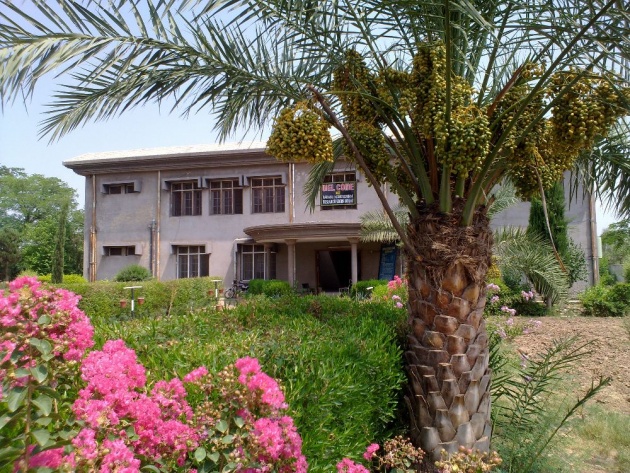Date palm (Phoenix dactylefera L.), a member of family Palmaceae is an important berry fruit. It is commercially grown in the southern area of Khyber Pakhtunkhwa as a cash crop. Successful dates culture requires prolong dry hot summer, absence of rain and high humidity at the time of ripening. These all can be easily availed in Kohat division. Moreover here in Kohat division wild dates can be seen on the edges of the farmers’ fields which bear fruits but with no market value. The present study has been prepared with the aim to study and gain the knowledge about improved varieties of dates and then introduce/ disseminate them in the area to boost up the standard of living of the poor farmers of arid areas.
Materials and methods: Dates are important arid fruit most suitable for barani areas. Performance of the leading seven cultivars of dates is being studied at BARS, Kohat since 1995. The cultivars being studied are collected from various research stations and local growers and planted in the fruit progeny orchard at BARS Kohat for yield evaluation and as mother plants for suckers/offshoots production. Two to four plants of each variety have been planted in the progeny orchard. These cultivars consist of Dhakki, Gulistan, Azadi, Khudravi and Shakri. The gaps were being filled from time to time for the missing plants during the previous years. Most of the plants of different cultivars have started bearing.. All the cultural practices like, fertilizer application, insecticides and pesticides sprays, artificial pollination etc were fulfilled during the season and data were recorded.
Results and discussion: As the fruit of dates matured in the months of August and September. So flower initiation and fruit setting data of this year whereas the maturity, yield and other data recorded on different parameters of the previous year are presented in table-H1. Fruit yield data of this year will be collected on maturity and presented in the next annual report.
Flower initiation and fruit setting: Male plants flowered early. The pollens were collected in a plastic jar to be used for artificial pollination. Cultivar Gulistan was noticed to flower early and also set the fruit early as compared to other cultivars.
Fruit maturity: Cultivar Azadi was the earliest to mature the fruit in the 2nd week of August. On the other hand cv Dhakki took more time and matured almost one month later.
Fruit size: The data (table-H1) showed that the size of all the available fruit of different cultivars was reasonable and acceptable. However, cv Dhakki resulted the maximum size. The fruit of this cultivar was 5 cm long and 3.1 cm round (diameter) with attractive feature.
Fruit yield (kg): The bunches were cut in “Dhoka” stage and were sun-dried in the form of Chohara and were weighed. The results of each treatment are reported as the average of three replications. The data given in table-H1 showed that variety "Azadi" gave 30 kg fruit. It was the maximum yield when compared with Dhakki probably due to fruit drop problem in Dhakki.
Incidence of insects/pests and diseases: All the varieties showed great resistance to disease, insects and pests attack during the experiment.

|
|
|



